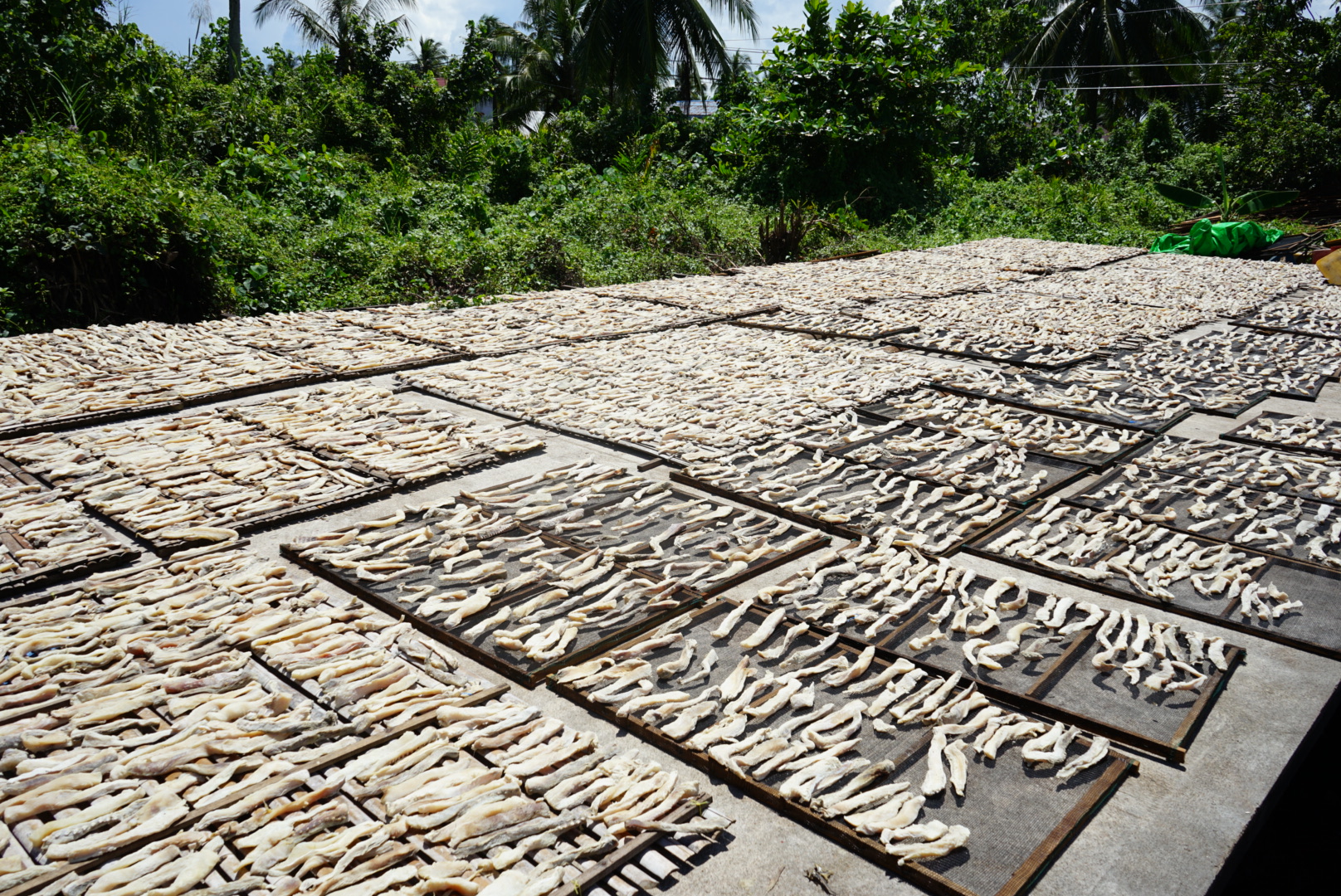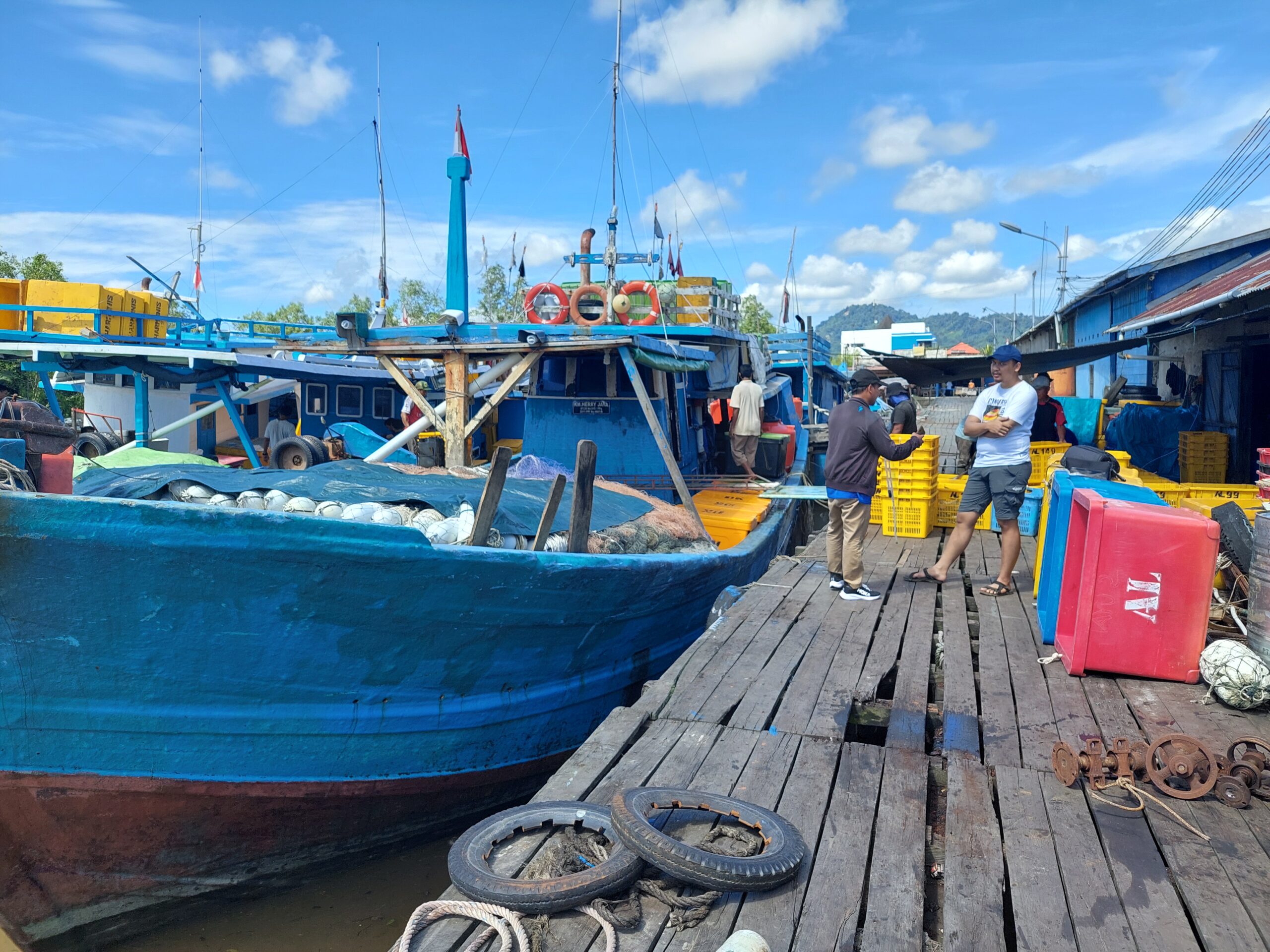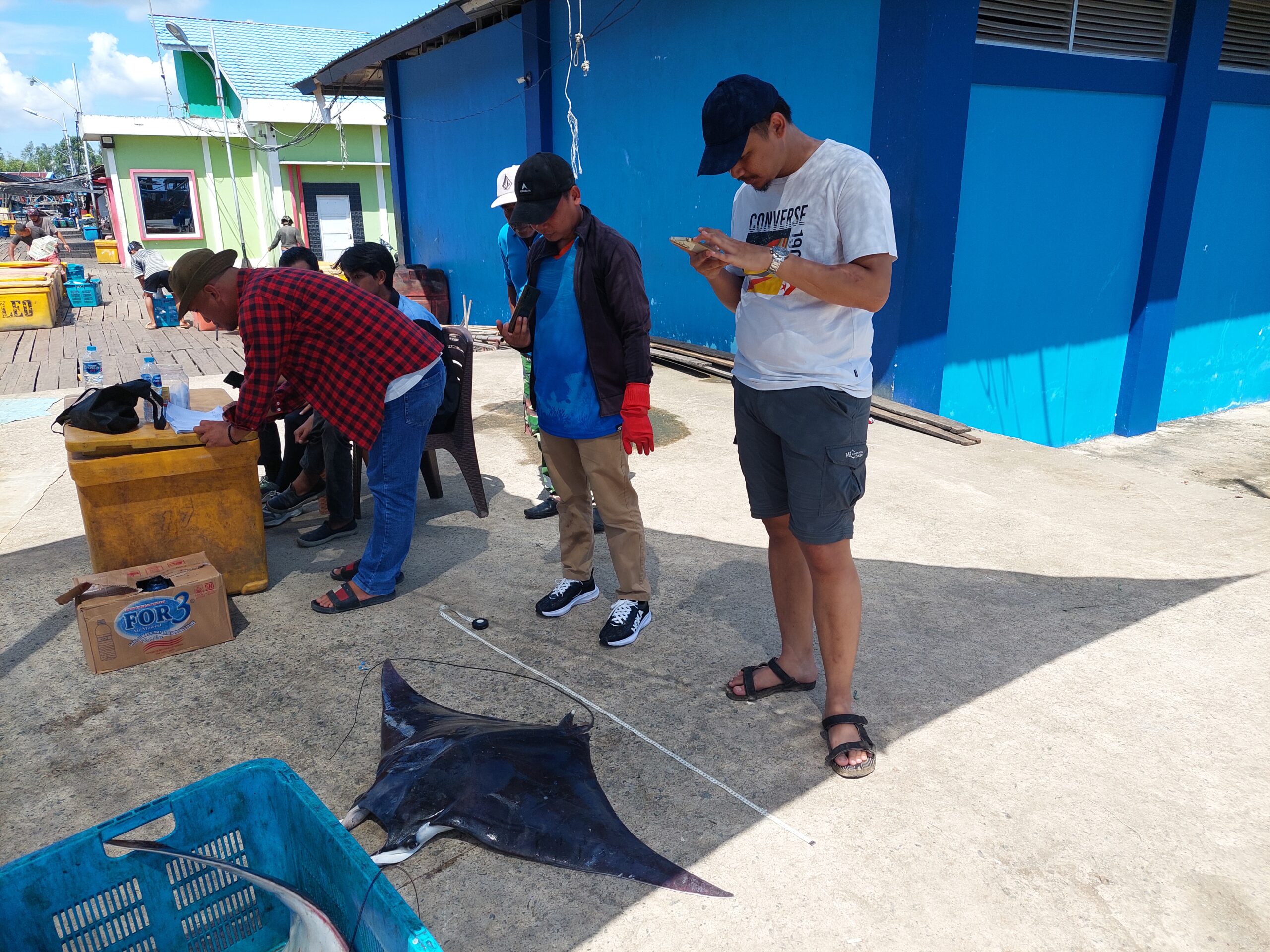West Kalimantan, The Hidden Wedgefish Kingdom
Critically endangered rhino rays face unprecedented threats due to their high value in international fin markets and their high-demand meat for local consumption in Indonesia. The region has high rhino ray biodiversity, including wedgefish, and is also a place where this species is utilised the most. However, even though there is much literature and sources that mention Indonesia as a shark and ray top fishing nation, there is really limited information of targeted rhino ray landings in Sungai Kakap, West Kalimantan, Indonesia.
In Sungai Kakap, a small town in Kapuas River mouth, there are at least seven private landing sites owned by locals that land, process and sell rhino-ray body parts in massive numbers for decades. Due to private ownership of these warehouse-landing sites, we notice why this fishery is so elusive and not well-known despite its massive production.
Earlier this year I went to West Kalimantan to conduct a pilot survey for my Save Our Seas Foundation project while also looking for suitable sites for my PhD data collection. Accompanied by Fauzi, a fellow shark researcher, and guided by Rizky, a shark and ray enumerator from Ministry of Marine Affairs and Fisheries Management Unit (BPSPL Pontianak), we checked some of the warehouses.
What I saw this week is the most wedgefish I have ever seen in my life, in many of its forms; from whole, meat, bones and skin, and many other processed products from wedgefish. In one warehouse, someone told me that their boat just landed more than a hundred wedgefish from a single fishing trip.

Wedgefish and many other shark and ray species dried in Sungai Kakap. Photo © Muhammad Ichsan.

Wedgefish of Sungai Kakap just landed and processed in privately-owned landing platform in Kapuas riverside. Photo © Muhammad Ichsan.

Processing the catch. Photo © Muhammad Ichsan.
We also received information that Sungai Kakap fishers sometimes land their catch in Pemangkat, a small town five hours from Pontianak, the Province Capital. In Pemangkat, we are accompanied by another BPSPL enumerator, Riansyah, that shows us the public fishing port and who sharsx his knowledge regarding local sharks and rays. and the fishing community.

Our team conducted monitoring in Pemangkat fishing port. Photo © Muhammad Ichsan.
Most of fisheries in Indonesia are multi-gear and multi-species, meaning even specific target fisheries like one in Sungai Kakap, land a variety of other shark and ray species too. In one day during a preliminary visit in Sungai Kakap, we documented at least two species from Wedgefish including; Bottlnose wedgefish (Rhynchobatus australiae), Bowmouth guitarfish Rhina ancylostoma, as well as others such as tiger shark (Galeocerdo cuvier) ornate eagle rays (Aetomylaeus vespertilio), a variety of stingray species, and Snaggletooth shark (Hemipristis elongata). In Pemangkat we documented mobula rays, bamboo sharks, and many other carcharhinids species.

Sharks and rays in landed in Sungai Kakap, including tiger sharks, wedgefish, stingrays and ornate eagle rays. Photo © Muhammad Ichsan.

Mobula as bycatch in Pemangkat fishing port. Photo © Muhammad Ichsan.
If not managed, these fisheries where endangered species are present will have detrimental effect on many species. Currently, most shark and ray species in Indonesia are not fully protected. and with their slow life history and high fishing pressures. these species are threatened with over-exploitation. However, in a country where fisheries commodities has important social-economic roles on community, managing species take many considerations. A sudden ban of natural resources without alternative livelihood proved to be a double edge sword in many places around the world.
To support informed decision for fisheries managers, comprehensive basic information is highly needed. This project aims to understand the basic information on fisheries, the life history and population of Wedgefish in West Kalimantan, and contribute to bigger research projects in the Indo-Pacific region as part of my study.
Other than that, we also aim to improve awareness, especially to local students in West Kalimantan. At the end of our visit in West Kalimantan, we visited Tanjungpura University (UNTAN) as the main academic institution in the province to give a general lecture regarding our project and the importance of wedgefish in the Indo-Pacific region.

General lecture of sharks and rays in Indo-Pacific region at the Tanjungpura University. Photo © Marine Science Department, Tanjungpura University.
Our next step is to conduct fisheries monitoring, biological data and population genetic sample collection in Sungai Kakap and Pemangkat. In the future, we hope to expand our program including social-economic mapping, capacity building for coastal communities improving awareness. and developing alternative livelihood schemes to reduce wedgefish mortality in West Kalimantan.
